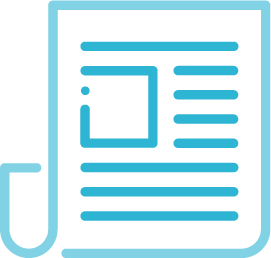Posted by Zosi Team

The best preparation for an external audit is perfecting your internal audit processes. While each facility’s procedures will be unique to its operation and products, you can apply the following internal audit process best practices to perform and evaluate effective assessments in your facility.
Initiate the Internal Audit Process
With your audit schedule complete, it’s time to begin the internal audit process. The lead auditor will call for the audit and identify what team members are appropriate and necessary for the audit in question. At a minimum, an audit team for departmental audits (like GMP audits) should include representatives from Operations, Quality Assurance, Maintenance, and Sanitation departments if available. Single individuals may perform other types of GFSI system audits, but this is up to the lead auditor’s discretion.
With the internal audit team assigned, you must define the audit, objectives, scope, and criteria. Consider:
- What type of audit will your team conduct? Is it against a specific standard?
- Will the internal audit include departments or the entire company? A specific product? An individual process? Your facility as a whole?
- What is the expected duration of the audit? How much time should your team and the auditee set aside?
- How should the audit results be documented?
Schedule the Audit
Next, determine the feasibility of your audit. Consider the time and resources available to you in terms of both your audit team and the auditee. Choose a time that is mutually acceptable for all parties. Keep in mind your audit team should be independent from the area being audited.
Inform the auditee(s) of the date, time, scope, and team members selected to complete the audit. The exception to this rule is the unannounced audit. A company may choose to conduct an unannounced audit to have a more accurate representation of what’s happening in a plant without any advanced preparation.
Documentation Review
Once initiated and scheduled, your audit team should complete a documentation review. This helps your team understand the requirements of all major programs undergoing the audit, so that they know what to look for and may verify these programs with confidence. The internal audit team should also examine previous audit records to refresh their memory of any non-conformities needing reinspection.
Create the Internal Audit Plan
How will you allocate your time between defining the scope, reviewing documentation, performing the audit, and recording results? This responsibility once again falls to the lead food safety auditor. An integral part of assembling the audit plan is preparing any documents your team may use to complete the internal audit process, such as checklists. This checklist streamlines and safeguards the internal audit process.
Perform the Audit
Your on-site internal audit activities need to begin with an opening meeting. Include the members of the internal audit team and representatives of the auditee so that they may become familiar with and agree to the audit scope. Be upfront about the communication process required during the audit process. Will you need to interview employees? What types of questions will you ask?
A third-party audit opening meeting should include members of all departments undergoing audit. During the audit, the auditor should have an escort around the facility to ensure everyone’s safety.
Now, the rubber meets the road – your audit begins, and the internal audit team must collect and verify the necessary information as indicated by their checklists. Internal audit best practices dictate direct observation as an integral part of the audit process. Direct observations make sure employees follow programs exactly as they’re written. Current records in progress may also be part of the audit to assure they are being completed in a timely and accurate manner.
Generate Audit Findings
Next, you’ll generate audit findings. This is a summary of your observations – both areas of compliance and nonconformities. For the latter, you must designate a classification: Are these minor, major, or critical? These classifications should be communicated to the auditee by the end of the audit.
Conduct Closing Meeting
Prepare your audit conclusions with an eye on what you will share during the closing meeting. Always begin this meeting by pointing out the positives. Thank the auditee for their time, and the courtesies extended to the audit team. Call out good practices in employee training, GMP compliance, sanitation, maintenance, and so on. From here, discuss the details of any non-conformities. Explain the standard that stemmed the issue, the objective evidence found, and what evidence the auditee should submit to verify its corrective actions.
Prepare the Internal Audit Report
The internal audit report may be done on or offsite. The format of this document is flexible to the type of audit performed. The auditee, senior management, and consumers may have access to this report, and so it must prove accurate, complete, and concise. The internal audit report should include a conclusion section, identify the total number of non-conformances in conjunction with some rating for a score or grade.
Once complete, the lead auditor should perform a technical review. For third-party audits, this is done by a certification body. Issue the report within an agreed-upon amount of time, typically within seven days.
Conclusion
Internal audit best practices help ensure the process goes smoothly for all involved and leads to continuous improvement. By following the outline above, your internal audit team will perform an effective internal audit assessment that fulfills your audit schedule’s demands and ensures successful external audits.



 Never Miss an Update.
Never Miss an Update. 